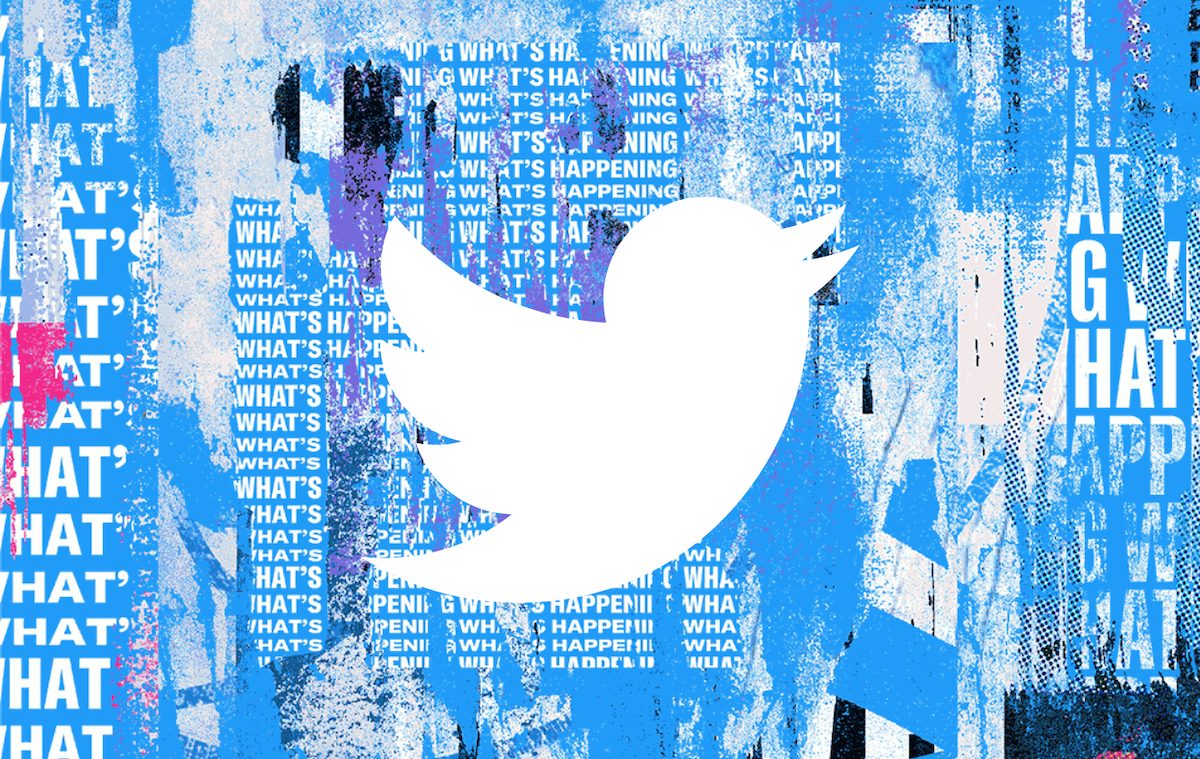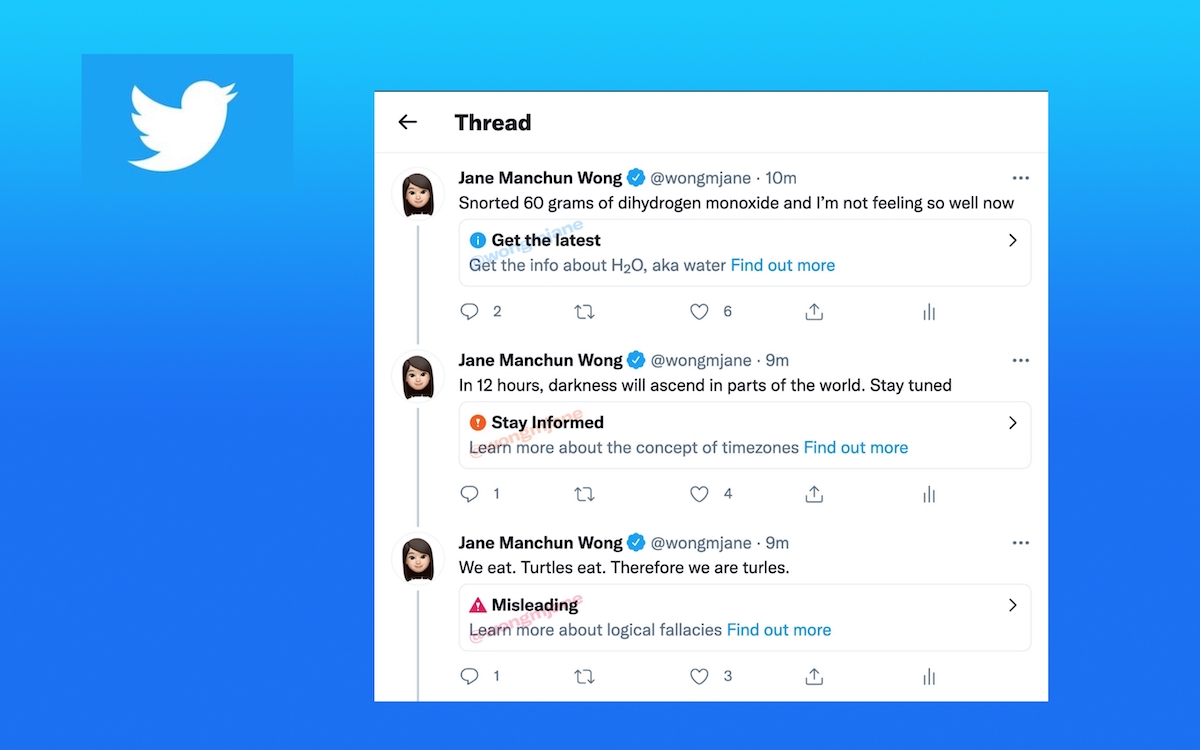With 199 million daily active users in Q1 2021, Twitter is a huge platform used by politicians, celebrities, activists, influencers, the public, and many others. Therefore, as a self-regulatory step, the social media company implemented measures to prevent the spread of misinformation on the platform like the alert feature which notifies the users that a piece of information is disputed when it is liked or retweeted.
In addition to existing measures, Jang Wong a reverse engineering expert has found that the company is working on three new and different misinformation warning labels.

In the future, Twitter will show misleading warning labels as per the content
As per the image shared by @Jane Wong, the platform will assess the content of the tweets to give it one of the following labels:
- Get the Latest label might be used as a nutritional recommendation because when Wong tweeted that she had consumed a lot of an acidic substance and does not feel good, the label suggested getting information on water.
- Stay Informed label might be used as an alert to learn about events happening around the world or verify geological, astronomical, and other facts because the prompt, to learn more about time zones, appeared when Wong tweeted that darkness would ascend on earth.
- Misleading Label would be used to alert users of completely outlandish claims like “We eat. Turtles eat. Therefore, we are turtles.”

Wong says that the new misinformation labels are very real and Twitter users reacted with excitement to this news.
well the features are real and being worked on but obviously the misinformation label content here are made up by me for the sake of demonstrating these three levels
— Jane Manchun Wong (@wongmjane) May 31, 2021
The need to contain the spread of misinformation on the social platform was highlighted firstly during the 2016 U.S Presidential Election when a large demographic of voters were dissuaded to vote by malicious and targeted ad campaigns spreading lies. Recently, after the outbreak of COVID-19 unverified and inaccurate information of the coronavirus cause, transmission, cure, and vaccination was widely spread via social outlets like Twitter, Facebook, WhatsApp, YouTube, and other platforms which put people’s lives at risk and especially let to Anti-Asian hate crimes.
The attack on the U.S Capitol Hill in January was also a result misinformation campaign by the former President and his supporter who cast doubts on the legitimacy of the 2020 Electoral process and enticed a mob to targeted a few Democratic representatives. Even at that time, Twitter took a difficult and strong step of suspending the sitting President Donald Trump’s Twitter account and labeled his tweets as misinformation.
Such incidents have pushed legislators to review existing policies that give social media platforms immunity over user-generated content. And U.S. Congress held a hearing in March to grill CEOs of Facebook, Twitter, and Google on the dissemination of misinformation on their platforms.
For the executives in the hotseat, Thursday’s session may also be their last chance to make a case personally to lawmakers before Congress embarks on potentially sweeping changes to federal law.
At the heart of the coming policy battle is Section 230 of the Communications Act of 1934, the signature liability shield that grants websites legal immunity for much of the content posted by their users. Members of both parties have called for updates to the law, which has been interpreted broadly by the courts and is credited with the development of the open internet.